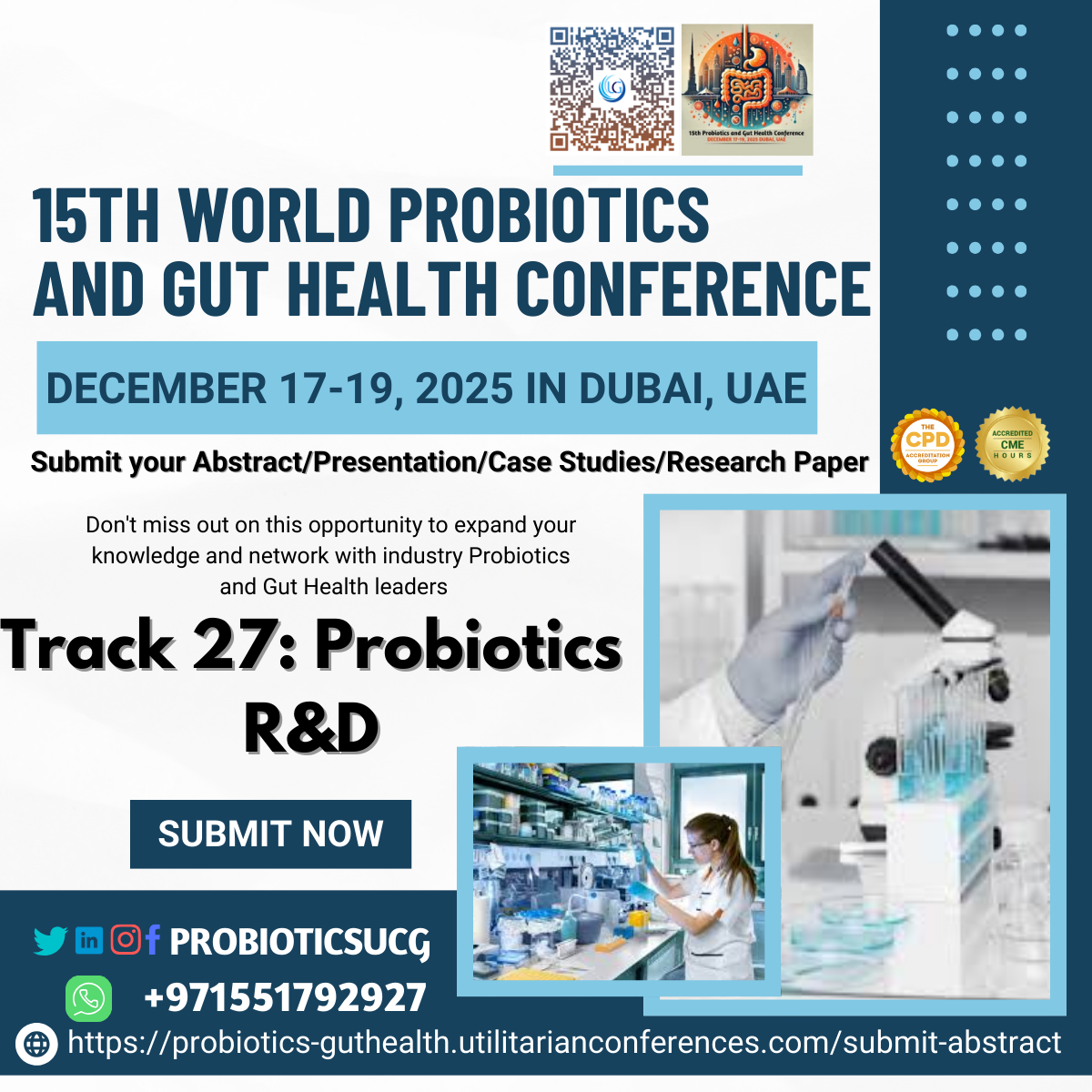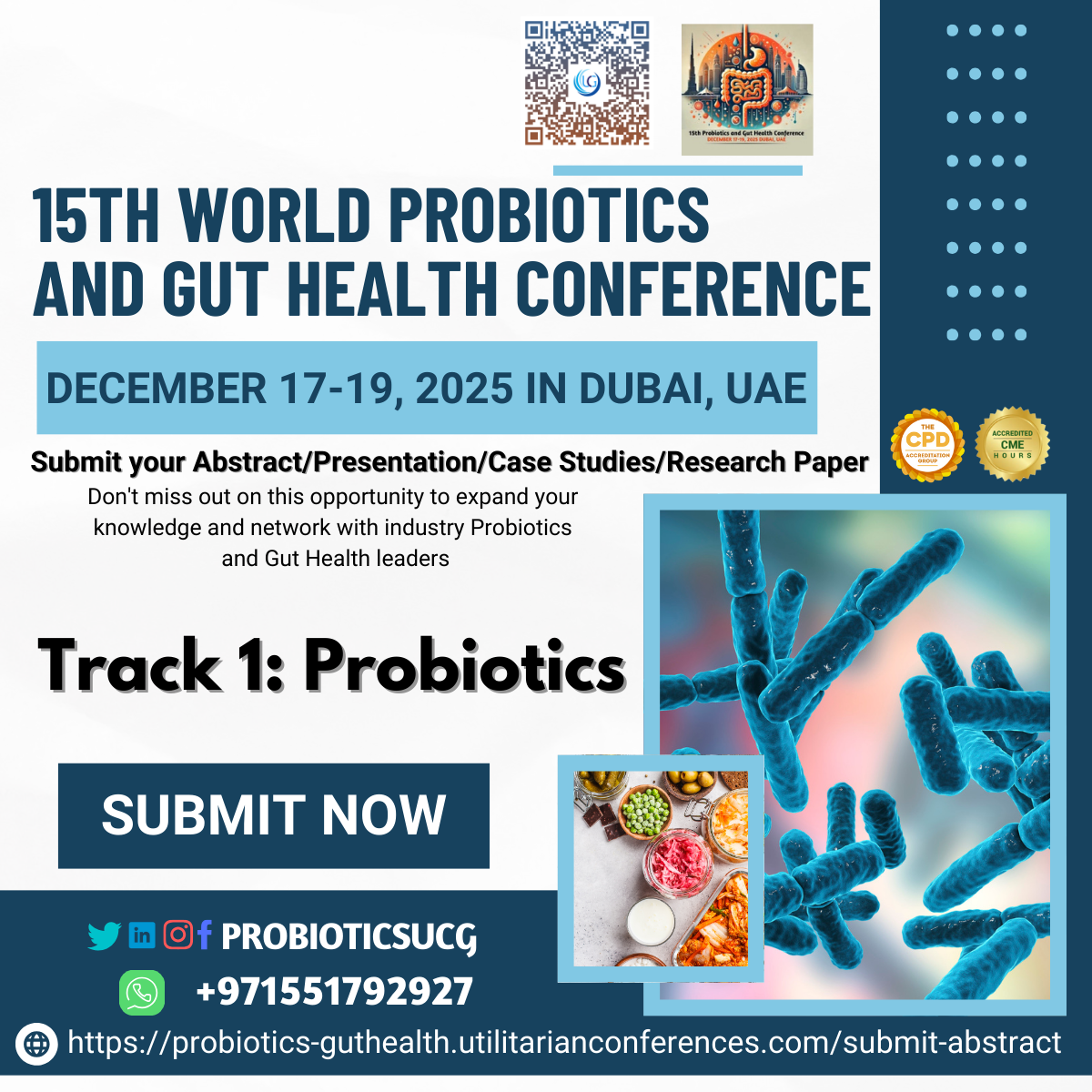



Probiotics are live microorganisms that provide health benefits when consumed in adequate...

Gut health refers to the balance and functionality of the digestive system,...

Probiotics research and development (R&D)
is a dynamic field that spans from the discovery and characterization of
beneficial microorganisms to the formulation, clinical testing, and
commercialization of probiotic products. Below is an overview of the key stages,
methodologies, and challenges involved in probiotics R&D:
·
Environmental
and Human Microbiome Sampling:
Researchers collect samples from diverse sources—such as fermented foods, soil,
and the human gut—to isolate potential probiotic candidates.
·
Screening
for Beneficial Traits:
Candidate strains are evaluated for properties such as acid and bile tolerance,
adhesion to intestinal cells, antimicrobial activity, and the ability to
modulate immune responses.
·
Genomic
Sequencing:
Whole-genome sequencing helps in identifying genetic markers associated with
probiotic functionality and safety, including the absence of virulence factors
or transferable antibiotic resistance genes.
·
In Vitro
Functional Assays:
Laboratory assays assess properties like enzyme production, metabolite
profiles, and the ability to influence host cell signaling.
·
Mechanistic
Insights:
Studies using cell cultures (e.g., intestinal epithelial cells, immune cells)
help elucidate how probiotic strains interact with host tissues and influence
cellular responses.
·
Safety
Profiling:
Tests are conducted to ensure that candidate strains do not produce harmful
substances and are non-pathogenic.
·
Efficacy
Testing:
Animal studies (commonly using rodent models) evaluate the therapeutic
potential of probiotics in preventing or mitigating disease states, such as
inflammatory bowel disease, metabolic disorders, or infections.
·
Dose
Optimization:
These studies help determine effective dosing strategies and administration
routes.
·
Strain
Viability and Stability:
Formulations must maintain high viability during manufacturing, storage, and
through the gastrointestinal tract. Techniques such as microencapsulation or
freeze-drying are often used.
·
Delivery
Formats:
Probiotics can be delivered in various forms, including capsules, powders,
fermented foods, and beverages. The choice depends on the target population and
desired health outcomes.
·
Matrix
Interaction:
The interaction between the probiotic strains and the product matrix (e.g.,
dairy, non-dairy beverages) is evaluated to ensure that the product maintains
its efficacy and stability.
·
Shelf-Life
and Storage Conditions:
Stability studies under different environmental conditions (temperature,
humidity, light exposure) help optimize packaging and storage recommendations.
·
Pilot
Studies and Proof-of-Concept:
Initial small-scale studies assess safety, tolerability, and preliminary
efficacy in humans.
·
Randomized
Controlled Trials (RCTs):
Larger RCTs are essential to conclusively demonstrate the efficacy of the
probiotic intervention for specific health outcomes, whether for
gastrointestinal health, immune modulation, or metabolic improvements.
·
Regulatory
Pathways:
Depending on the intended use (dietary supplement vs. therapeutic agent),
probiotics may be subject to varying regulatory frameworks (e.g., FDA, EFSA).
Compliance with Good Manufacturing Practices (GMP) and thorough documentation
of clinical findings are essential.
·
Labeling
and Claims:
Clear and evidence-based labeling is required, particularly when health claims
are made regarding disease prevention or management.
·
Fermentation
Optimization:
Scaling up from laboratory to industrial-scale fermentation involves optimizing
culture conditions to maximize yield and consistency.
·
Downstream
Processing:
Processes such as harvesting, concentrating, drying, and formulating the
probiotic product must preserve the viability and functionality of the
microorganisms.
·
Standardization
and Consistency:
Robust quality control measures, including microbial counts, contamination
testing, and potency assays, are crucial for ensuring batch-to-batch
consistency.
·
Stability
Testing:
Ongoing stability testing helps ensure that the product remains effective until
the end of its shelf life.
·
Personalized
Nutrition:
The emerging field of personalized probiotics tailors interventions based on
individual microbiome profiles and health needs.
·
Sustainability:
There is increasing demand for environmentally sustainable production and
packaging practices in probiotic products.
·
Microbiome-Host
Interactions:
Advances in systems biology and bioinformatics are providing deeper insights
into the complex interactions between probiotics, the gut microbiome, and host
health.
·
Next-Generation
Probiotics:
Beyond traditional strains, researchers are exploring novel microorganisms and
consortia that may offer enhanced or more targeted therapeutic benefits.
Probiotics R&D is a multidisciplinary
endeavor that integrates microbiology, genomics, formulation science, clinical
research, and regulatory compliance. With ongoing advances in technology and a
growing understanding of the human microbiome, the field is poised to develop
innovative probiotic products that can address a wide range of health
challenges. Whether for promoting general wellness or managing specific
diseases, rigorous R&D practices are essential to ensure that probiotic
products are both effective and safe for consumers.